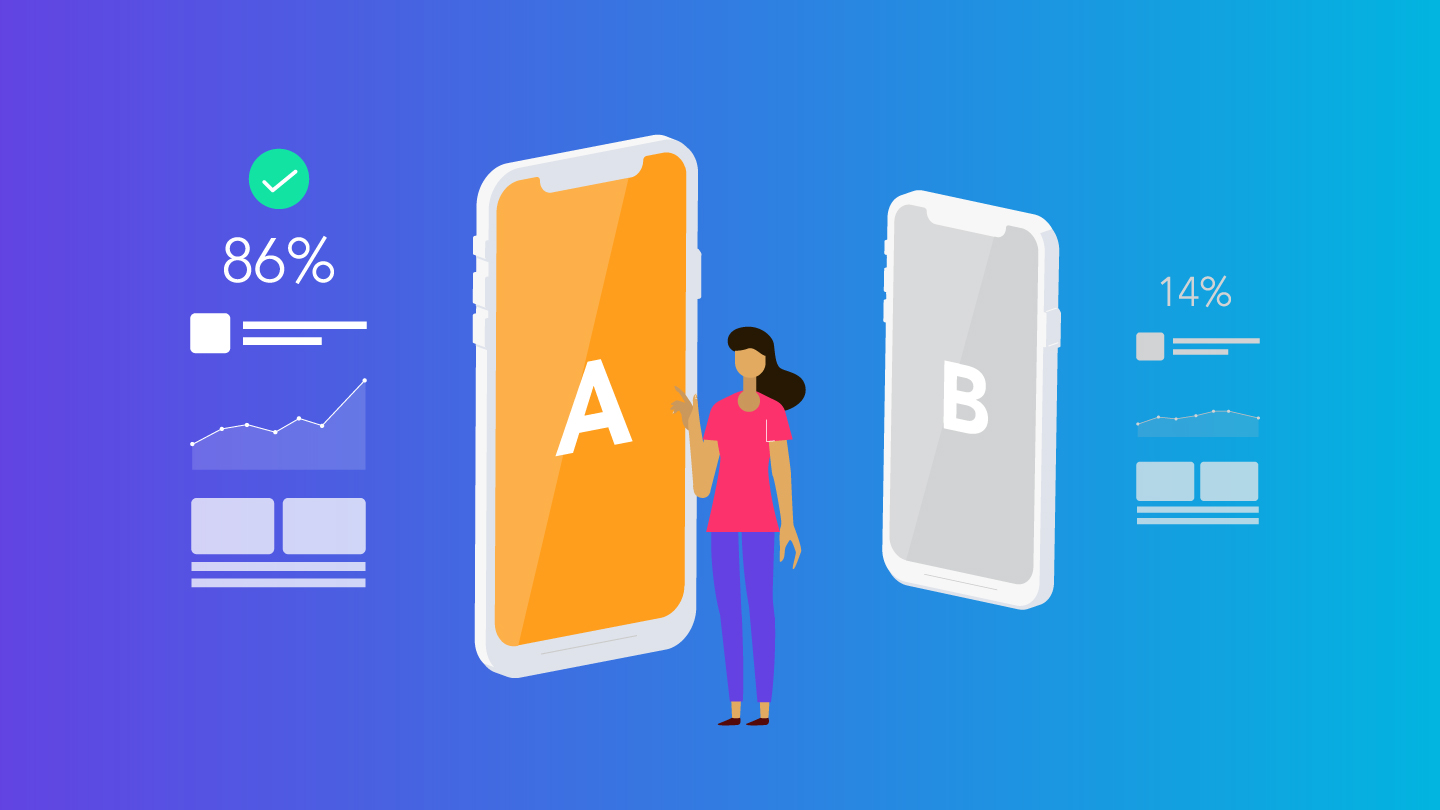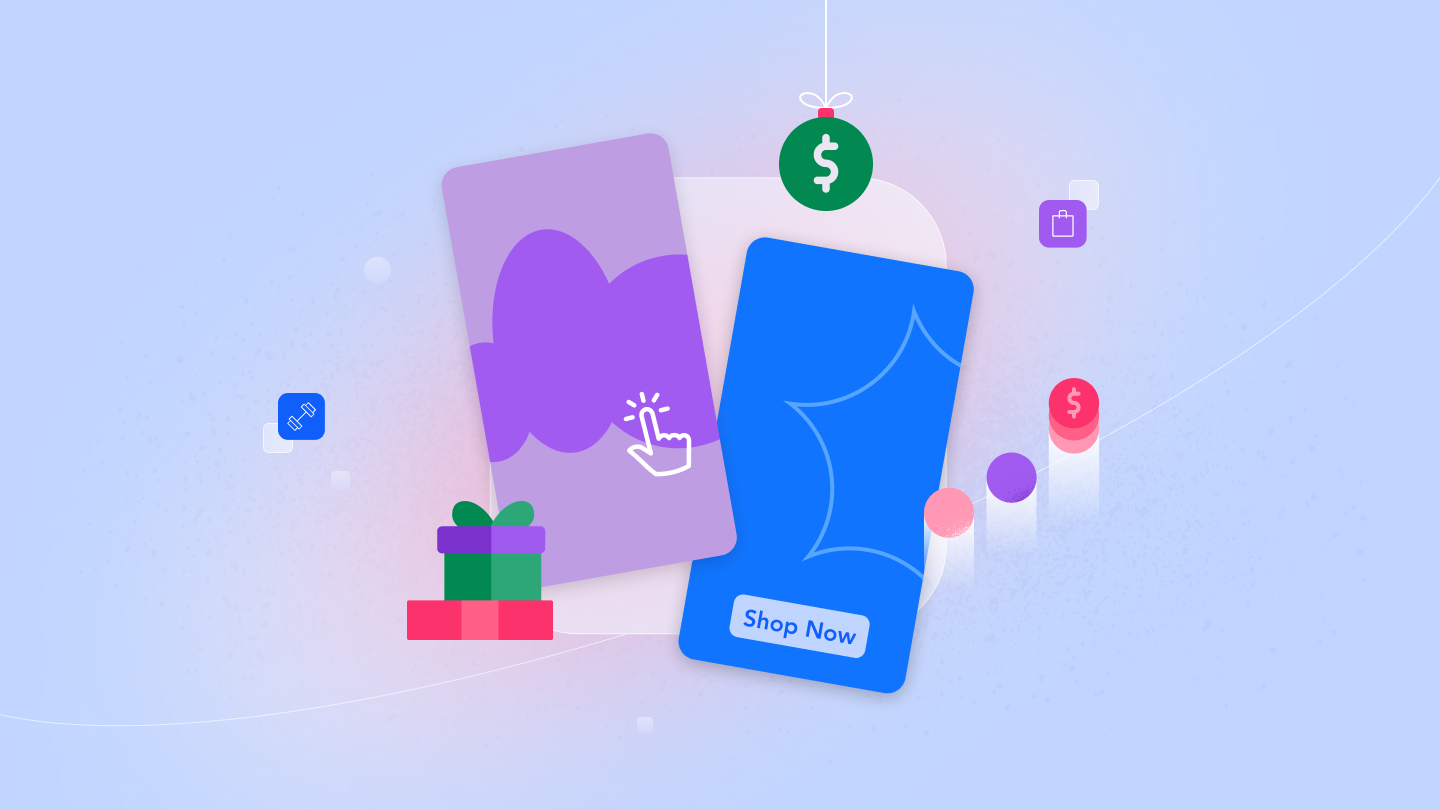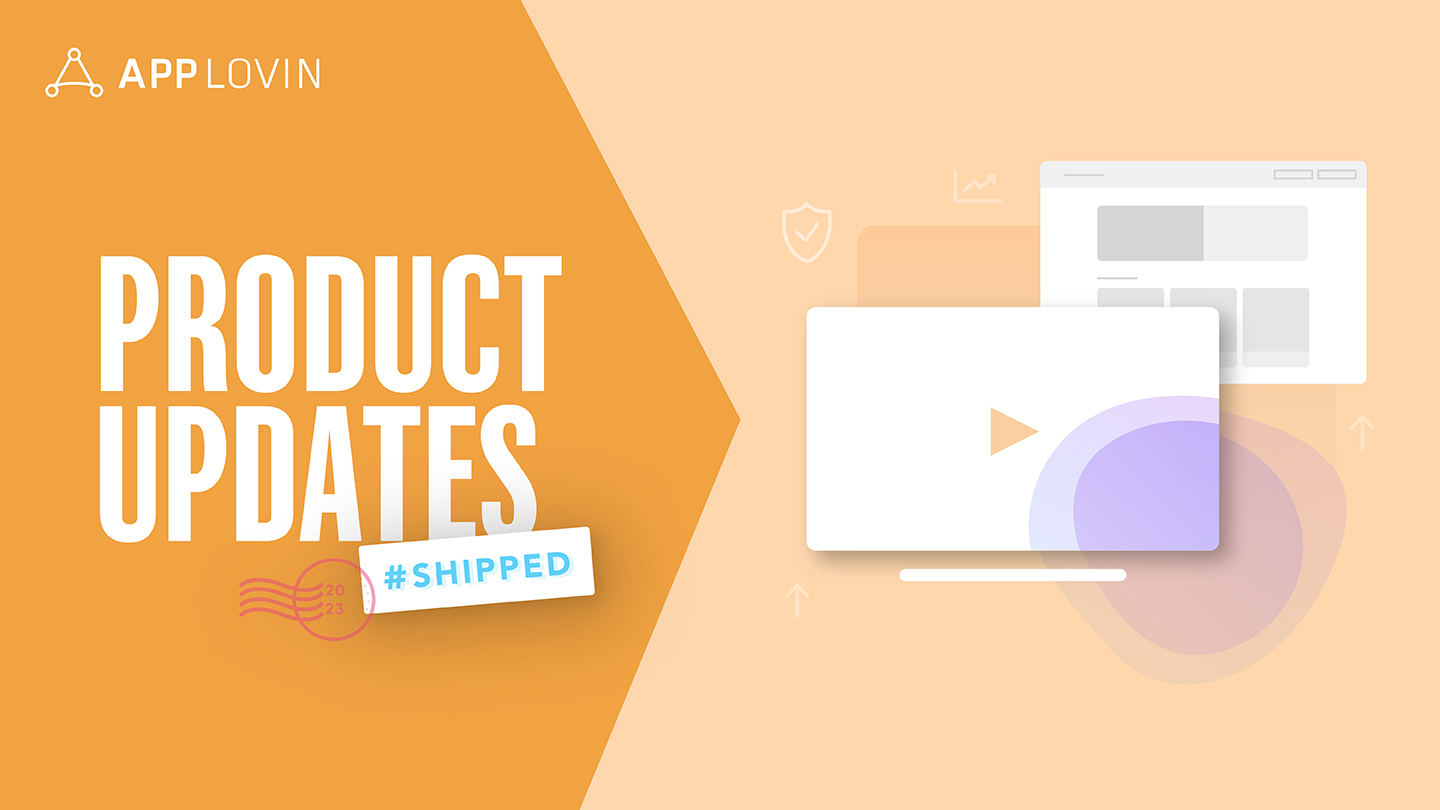“Always be testing.” There’s a reason why app developers embrace this mantra for improving engagement and performance with their apps. Performing A/B tests with your app can ultimately help you:
- Better understand how users are engaging
- Optimize and improve the overall experience
- Increase your app’s performance and profitability
What is an A/B test?
A/B testing is an essential part of learning and growing when developing your app business. When conducting A/B tests, users are randomly placed into different segments, and each group is shown either the A or B experience.
After enough users go through the experiment in separate cohorts, you can see the results and understand which version leads to the higher conversion or response.
Why A/B test?
The purpose of A/B testing is to understand how your users are converting. It also helps you understand user behavior and preferences so you can be more strategic in the type of systems and features you build, in addition to analyzing performance and measuring conversions.
You can test and analyze just about anything—quick examples of A/B tests may include:
- CTA button: Changing the color of the button or positioning to help improve conversions—perhaps users aren’t seeing it if it’s not prominently placed. Should it be at the top or bottom of the screen? Or should it be a floating element?
- Engagement: If you have a mobile game and want to encourage users to continue playing, you could display the player’s metrics on the screen and compare their score to other players. A/B testing could give you a better idea if these competitive metrics motivate players to stay engaged.
- Monetization: Test different banners or in-app purchases to see which were clicked on the most.
The best practices for A/B testing
At its core, A/B tests compare two versions of the same variable to see the impact.
When running tests, best practices include:
- Having a hypothesis of what you think will happen
- Making sure the conditions are as similar as possible, with the exception of the variable
- Giving the test a clear timeline
- Analyzing the results
Always start with a hypothesis so you can analyze the results and make the necessary changes. No matter how much you think you know or understand what your users are doing, confirming it with an A/B test will allow you to have more confidence in making your next decision. Improving your conversion metrics will help you drive higher profits and performance within your app and ultimately scale your business. Gaining a better understanding of the user’s behaviors and motivations ultimately improves the overall quality of your app.
Here are three A/B tests you should run to improve your profits.
1. Retention
According to one report, 55 percent of mobile app users abandon an app one month after downloading and 21 percent of mobile app users abandon an app after only launching it once. This means retention should be at the top of mind when testing your app. How frequently your users return to your app within a specified timeframe (usually 30 days) is your retention rate.
Test at every stage. Here are a few considerations for what to test after a user has downloaded your app:
- Promotional content
- Specific product features
- Marketing campaigns drive users to return to your app
- Different types of in-app purchases
- Special messages
- Sales
- Upgrades
2. Onboarding
Onboarding is considered one of the most important A/B tests to better understand user experience. It’s the first time a user engages with your app so it’s critical to understand at which point users are finding success with your app.
Make a great impression from the get-go. This includes ensuring users understand your app’s unique features and benefits, which helps keep them engaged.
The key findings during the onboarding phase should be to understand when users find value in your app.
Here are A/B tests to help improve your onboarding:
- Signup timing: Do you require users to sign up immediately or do you allow people to use the app before asking them to sign in? By doing the latter, you’re showing users what your app is all about so they understand the value before committing to sign up. Again, test to find out what resonates most.
- Logins: If you do ask users to sign up immediately, test the form the user fills out. Do they have to fill out three lines vs. two? It may make a huge difference in who stays and bounces. Or perhaps you choose to go with a social login vs. email vs. no login at all.
- Advancement flow: Show users how many screens or steps are remaining in the onboarding experience so they understand when it will end. You could test different design layouts, including displaying the number of screens that are left vs. dots at the bottom of the screen vs. a bar with the percentage of how much they’ve completed.
3. Test copy
Your app’s copy is a crucial part of the user experience and a strong way to sway what the user does.
It is also a big part of getting noticed in the app stores, also known as ASO or app store optimization. Once the user finds your app, make sure the copy and messaging are concise, emotional, and action-motivated and show the value to motivate users to take the next step. Whether it’s to share the app on social media channels, leave a review on the app store, or make an in-app purchase, testing the impact of your copy should be an on-going process.
Here are some ideas for A/B testing:
- Question vs statement: You can try this in your push notifications or tutorials that show users what the next step is supposed to be.
- CTA: What is driving users to click and take the next step? Test which phrases cause an uptick in conversions.
- Wordcount: Test the length of your copy with a benchmark—should it be seven words vs. 10?
- Emotional connection: Use words that evoke a sense of connection within your audience, such as easy/simple, free, love, new, proven, save. This can drive a deeper understanding of player psychology and motivations when testing new copy.
A/B testing will help you understand how to grow your app
A/B testing is a useful tool to help you identify what to improve upon and what to double down on. The benefits may include:
- Higher conversion rates and in-app purchases
- Making future decisions more confidently
- Improvements in revenue, engagement, and retention
The discoveries resulting from your A/B tests can lead to significant business improvements and help you understand your audience and their behavior.
Watch AppLovin’s Ask the Dev to find out how Etermax improved their testing and ROI.









